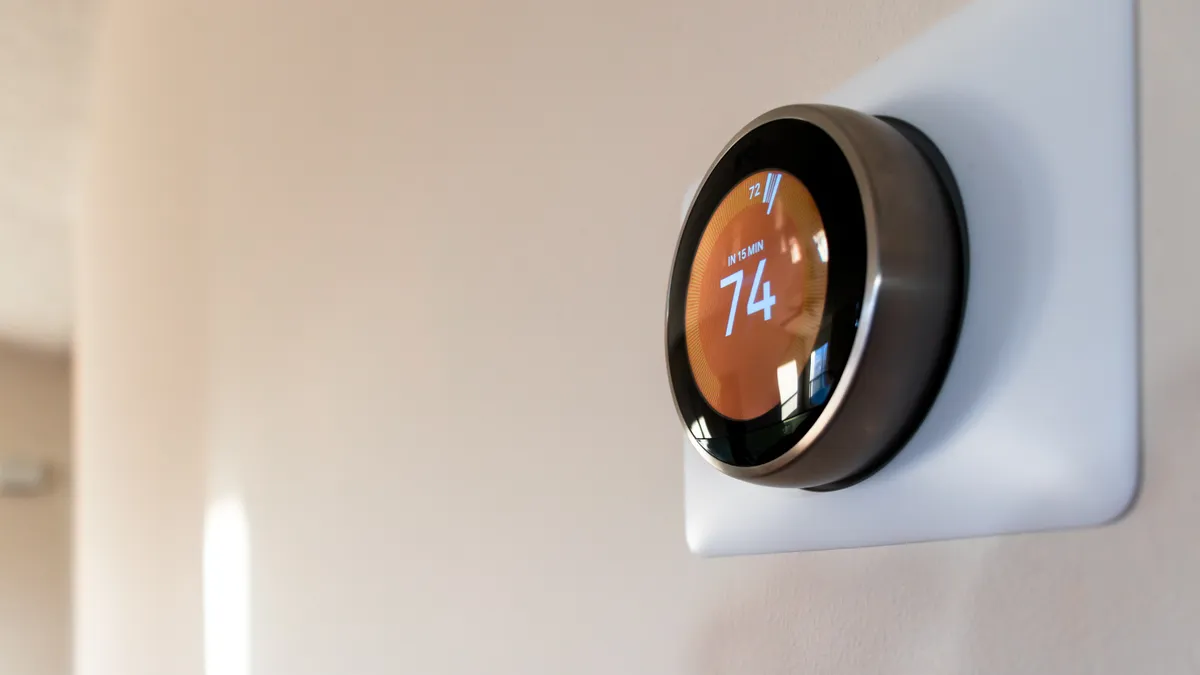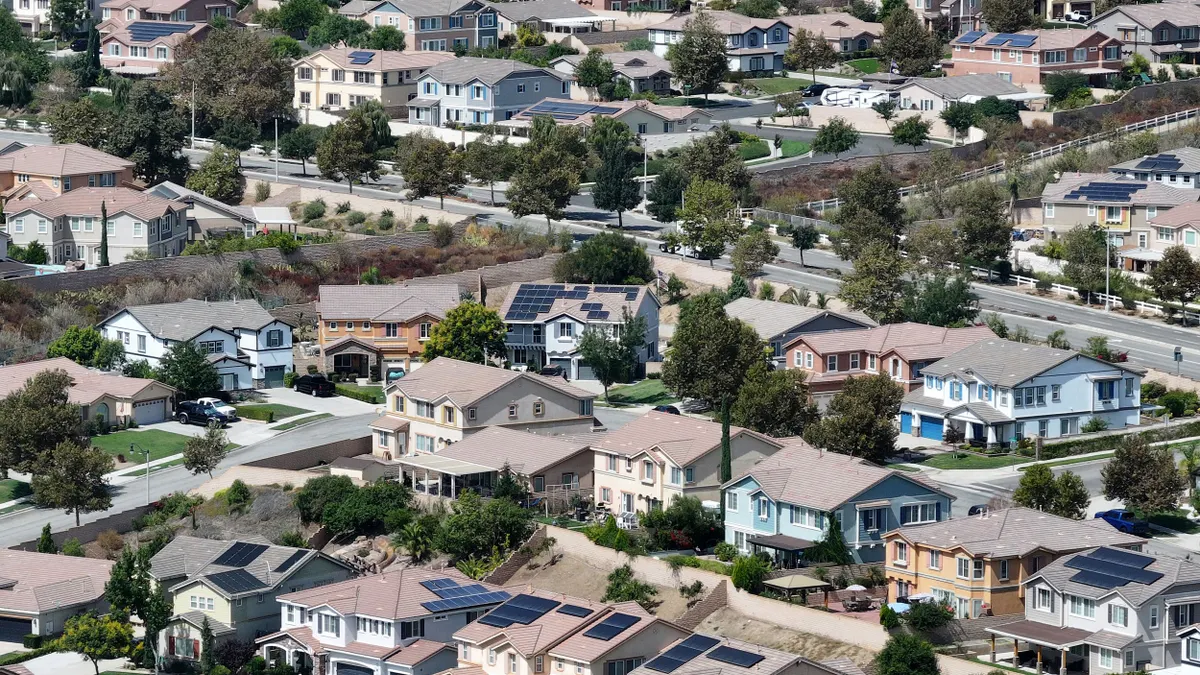Sometime on Wednesday, an obscure government body most people have never heard of will vote on energy standards impacting a wide range of products – from residential heat pumps to countertop wine coolers. And though the average consumer should barely notice, the changes are part of an enormously successful plan by the federal government to reduce carbon emissions by at least 3 billion metric tons cumulatively by 2030.
For perspective, that's more than half of the annual energy-related carbon emissions produced by the U.S. economy. In 2014, those emissions amounted to about 5.4 billion metric tons, according to the EIA.
The agency is called the Appliance Standards and Rulemaking Federal Advisory Committee, or ASRAC. “They have kind of flown under the radar,” said Marianne DiMascio, who works with the Appliance Standards Awareness Project. ASAP was formed by several groups, among them the American Council for an Energy-Efficient Economy, to help form coalitions to develop new efficiency rules for appliances.
Appliance standards, in the grand scheme of energy policy, are not the most exciting topic. But in an era of rising political contentiousness, improving appliance standards could be one of the last remaining areas of bipartisan consensus.
"I think it goes unnoticed sometimes because it is often uncontroversial. There has been longstanding bipartisan support for the efforts, with five pieces of appliance standards legislation passed over 40 years," DiMascio said. "It doesn't always make for exciting news to say there's a policy that many people agree with, that is having a huge impact, and it's about the type of motor your air conditioner uses [or the amount of insulation on a water heater]."
"ASRAC" alone is tough to remember; the "F" for Federal just sort of vanishes. And the committee's working group names don't help its chances in the news cycle: Dedicated Pool Pumps Working Group and Walk-in Coolers and Freezers Working Group (more on this one later).
Congress has set minimum energy conservation standards for consumer products and commercial and industrial equipment since 1975, beginning with the Energy Policy and Conservation Act. The products regulated by the Appliance and Equipment Standards Program represent about 90% of home energy use, 60% of commercial building energy use, and 29% of industrial energy use. And according to the Department of Energy, the standards saved American consumers $55 billion on their utility bills in 2013.
It's not always roses: Some standards are more hard-fought than others, but even the process aims to be team-oriented. Most rules are developed over a period of several years, with stakeholders meeting together for a week or more during that time, and chances for public comment.
If that seems like a lot for a beer fridge or wine cooler, so far the results have been impressive.
President Obama in 2013 targeted appliance standards to reduce carbon dioxide emissions by 3 billion metric tons by 2030, and standards passed so far in his terms will reduce emissions by 2.2 billion. The list of standards passed in Obama's time in office is a reminder of how far-ranging and specific the rules get: changes to “Automatic Commercial Ice Makers” will save consumers $1 billion, for instance. New lighting standards, on the other hand, offers closer to $170 billion in savings.
According to DiMascio, that 2.2 billion metric tons of carbon emissions avoided is the equivalent of taking 578 typically-sized coal power plants offline for a year.
Controversy over furnace standards
A hallmark of ASRAC's process has been developing new standards in a team-based environment. Working groups bring stakeholders to the table, while jointly developing new standards that the committee then votes on.
Of the "term-sheets" that set the standards, DiMascio said, "not all of them are negotiated, but a good chunk of them have been."
When the process works, some degree of consensus is reached, often between efficiency advocates, consumer watchdogs and the manufacturers of appliances, represented by large trade groups. A month ago, ASRAC approved an agreement reached by manufacturers and energy efficiency advocates on new standards for walk-in coolers and freezers. It's the kind of news that could go unnoticed but for the 80 billion kWh it is estimated to save over 30 years.
Stephen Yurek, president and CEO of the Air-Conditioning, Heating, and Refrigeration Institute, which represented manufacturers, said the "negotiated rulemaking process has proven to be a successful avenue for developing a rule that is both realistic and achievable."
But on the flip side is a rulemaking like the one being proposed for new home furnaces. According to ASAP, upgrading efficiency standards to 92% from the current 80% annual fuel utilization efficiency rate, would net consumers $600 in savings over the life of their furnace.
The American Public Gas Association (APGA) successfully went to court in 2011 to block a similar proposal. The group said the higher standard would prohibit the use of non-condensing furnaces, which could mean some homeowners would need to make venting modifications to their homes. The committee must vote again this year on a new proposal, and APGA has been lobbying on that front again.
The current proposal "ignores research that shows homeowners are willing to invest in energy efficient technology as long as the payback is five years or less," according to Kathy Garcia, director of federal and state relations for Texas utility CPS Energy. She said the proposal uses flawed numbers for the life of furnaces to help determine the value of the standards, fails to consider fuel switching, and will place a significant cost on seniors and low-income citizens.
A final rule is likely from the committee this year, according to ASAP's DiMascio, and could be the most significant to be considered in 2016. Along with the furnace standards, battery chargers, dehumidifiers and other residential products are on the agenda this year.
"They've been quietly making great advancements in efficiency for decades," DiMascio said. "The savings build as more and more people replace their appliances."
Correction: A previous version of this article referred to the president and CEO the Air-Conditioning, Heating, and Refrigeration Institute as Stephen Yure. His name is Stephen Yurek.





















